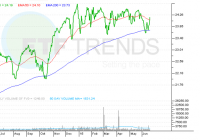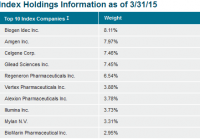German Government Provides Relief For RWE- But That Won’t Turn The Share Price
The planned levy on old coal plant will most likely be scrapped. RWE will see a positive impact on two sides: Most of its plant will keep running and the one that won’t will receive capacity payments. The relief bounce of the shares is justified, but the news is not enough to reverse longer term performance. The likely prospect of an absence of the coal levy is a great relief for the German generators. Contrary to previous developments, this time the biggest beneficiary is RWE ( OTCPK: OTCPK:RWEOY ). I short term relief, but prefer E.ON ( OTCQX: OTCQX:EONGY ) for longer term exposure. According to German news source ARD, the Economy Minister will drop the planned coal levy . The Ministry has said it is looking at alternative plans. Reportedly, the government is looking to mothball 2.7GW of old coal plant over a time frame of four years, in order to push forward towards its emissions reductions target. Old hard coal plant under the CHP (combined heat and power) regime would be shut first, in order to substitute that plant with gas CHP. The government would look to cover the 5.5mt shortfall against its emission reductions target through other measures, such as support for heat pumps and unspecified measures at municipalities. The Minister has said he will publish a final decision July 1st. Considering the wordings of comments by several senior government and State level officials across the coalition parties on the matter over the past couple of days, I see the likelihood as the coal levy being off the table. “Realpolitik” and industrial policy seem to have won the argument. The impact on the domestic lignite industry would have been too important to bear. Further, under energy considerations, especially security of supply and affordability, lignite is a fuel that is abundant and cheaply available from domestic sources. It is clear, that there will be another impact on affordability. The CHP repartition will increase end user prices. But so would the coal levy ad power price impact have done. Mothballing of old capacity would almost certainly hit RWE alone. It has over 7GW of coal capacity that is over 37 years old. But, on balance it might be a positive. The plant runs on very low load factors. On the other hand, the Minister has said there would be compensation for such reserve plant. RWE and Vattenfall would thus receive capacity payments. On a side note, the part of the mothballed reserve plant invites questions relating to potential capacity payments. The government has several times articulated a less than supportive position for capacity payments. And certainly, if any they might be for gas in the first instance. But these plans could be interpreted as a de facto start of a remunerated capacity reserve. With that, I see the relief bounce for RWE as justified. But we doubt that there will be any reversal of performance. For that, the structural challenges on the overall profitability of the generation business are too steep (for further detail on my fundamental views see my previous article on SA – Why RWE remains uninspiring ). Editor’s Note: This article discusses one or more securities that do not trade on a major U.S. exchange. Please be aware of the risks associated with these stocks. Disclosure: I/we have no positions in any stocks mentioned, and no plans to initiate any positions within the next 72 hours. (More…) I wrote this article myself, and it expresses my own opinions. I am not receiving compensation for it (other than from Seeking Alpha). I have no business relationship with any company whose stock is mentioned in this article.

